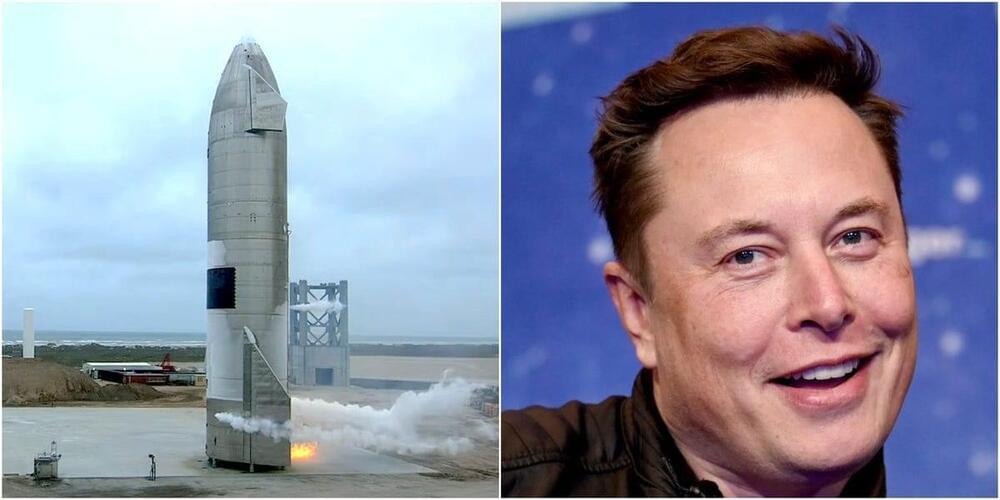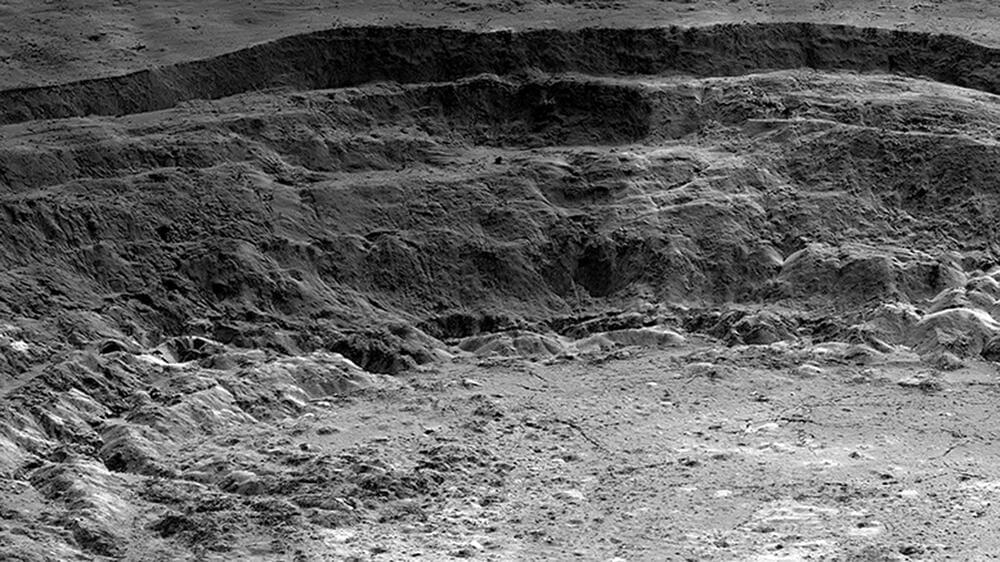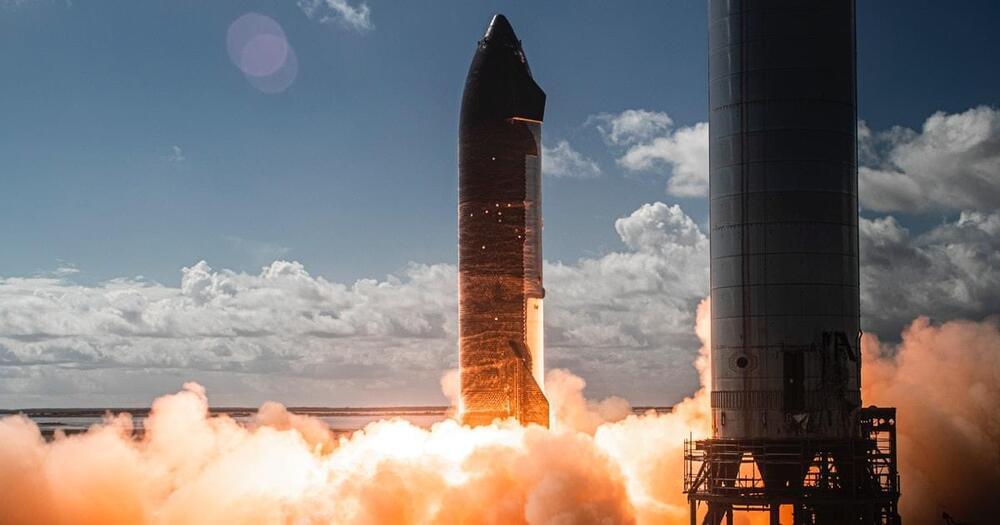Musk gave a new date for Starship’s first orbital flight. He’d previously predicted it would launch in July, then November.


On Wednesday, CEO Elon Musk outlined how the company’s under-development rocket will deliver a “high fly rate” of a dozen launches in 2022. This will enable the ship to deliver actual payloads in 2023 before moving on to more ambitious goals like sending humans to the Moon and Mars.
The comments, made at the joint meeting of the Space Studies Board and the Board on Physics and Astronomy, outline how the stainless steel rocket taking shape in Texas will move from prototype curiosity to working ship.
It’s a project that could enable some of SpaceX’s most significant goals. First outlined in 2017 under the name “BFR,” the Starship is a stainless steel rocket that measures around 400 feet tall when paired with its Super Heavy booster. It’s fully reusable, designed to fly up to three times per day. It’s capable of sending up to 150 tons or 100 people into space at a time.
The arrival of the second Orion European Service Module (ESM) at the Kennedy Space Center (KSC) in October signified the beginning of months of final assembly of the first crewed Orion spacecraft that will fly four people on the Artemis 2 mission. Following the delivery of the ESM from prime contractor Airbus Defence and Space to Orion prime contractor Lockheed Martin, the two primary elements of the Artemis 2 Orion Service Module are now being bolted together.
Lockheed Martin is processing Orion flight hardware for Artemis 2 and Artemis 3 as a part of their Assembly, Test, and Launch Operations (ATLO) in the Armstrong Operations and Checkout (O&C) Building at KSC. As they process the Artemis 2 Orion Crew and Service Modules to be mated next year, the ATLO team also received the next Crew Module (CM) pressure vessel and is also simultaneously beginning build-up of the Crew Module and Crew Module Adapter (CMA) structures for Artemis 3.
What if humanity grew to be so technologically advanced that we were able to leave our Solar System and spread across interstellar space? Would we hop from one exoplanet to another, colonizing everything on our way? How could we make traveling across the Universe possible?
Transcript and sources: https://insh.world/science/what-if-humanity-became-an-interstellar-society/
Made possible with the support of Ontario Creates http://www.ontariocreates.ca.
Watch more what-if scenarios:
Planet Earth: https://www.youtube.com/watch?v=_-HhCwYD7rc&list=PLZdXRHYAVx…Yq9N9wyb2l.
The Cosmos: https://www.youtube.com/watch?v=gfuJyVkMH_g&list=PLZdXRHYAVx…wXNGYHmE8U
Technology: https://www.youtube.com/watch?v=CS3bBO05fpU&list=PLZdXRHYAVx…qSEB7kDdKO
Your Body: https://www.youtube.com/watch?v=QmXR46TrbA8&list=PLZdXRHYAVx…2ySsHj8GZO
Humanity: https://www.youtube.com/watch?v=fdCDQIyXGnw&list=PLZdXRHYAVx…t8zFxSCSvZ
If you enjoy What If, make sure to check out our other channel “Underknown”: https://www.youtube.com/c/interestingshit.
About What If: Produced by Underknown in Toronto, Canada, What If is a mini-documentary web series that takes you on an epic journey through hypothetical worlds and possibilities. Join us on an imaginary adventure — grounded in scientific theory — through time, space and chance, as we ask what if some of the most fundamental aspects of our existence were different.
Ad Astra School is the experimental school that Elon Musk started in one of SpaceX’s factories to give an education to his own children and selected children of SpaceX employees. The future of work will require a set of skills that are not taught in schools today. The future of work will involve robots and Artificial Intelligence collaborating with humans. The Astra Nova School’s pillars include caring about community, focusing on student experiences, and sharing the work they do with the world.
Here students learn about simulations, case studies, fabrication and design projects, labs, and corporate collaboration. In general, school systems are rigid. They are more system-centric than student-centric. Astra Nova is changing that by creating a philosophy of student centricity, a value for individual abilities, praising curiosity, and encouraging problem-solving and critical thinking.
💰 Get Free Bitcoin on CoinBase: https://rb.gy/dhms0s.
💰 Earn Free Crypto: https://rb.gy/jf0q9n.
💰Get Free Stocks: https://rb.gy/2fy0a3My Favorite Editing Software:
▶ Adobe Premier Pro: https://rb.gy/qzfnsgMy Favorite Royalty Free Music Site:
▶ Epidemic Sounds: https://rb.gy/wssm4kFor more by Smart Sense subscribe now: https://bit.ly/36lGHuU
For the best videos be sure to subscribe and turn on the post notifications so you don’t miss any videos and once you’ve subscribed comment something nice for a shoutout.
SpaceX plans to launch a staggering number of rockets next year, helping to reach CEO Elon Musk’s goal of completing 48 launches in one year.

Alongside advances in space exploration, we’ve recently seen much time and money invested into technologies that could allow effective space resource utilization. And at the forefront of these efforts has been a laser-sharp focus on finding the best way to produce oxygen on the Moon.
In october, the australian space agency and NASA
Established in 1958, the National Aeronautics and Space Administration (NASA) is an independent agency of the United States Federal Government that succeeded the National Advisory Committee for Aeronautics (NACA). It is responsible for the civilian space program, as well as aeronautics and aerospace research. It’s vision is “To discover and expand knowledge for the benefit of humanity.”

With the recent COP talks in mind, is this the Eco alternative to rocketry? And are there perhaps others?
I talked about Spinlaunch a few years ago, they wanted to reduce space launch costs by throwing the launch vehicles out of a spinning launcher at hypersonic speeds. I was somewhat skeptical as to the chances of solving the engineering problems inherent in this, but recently they demonstrated a mach 1 launch using their 1/3 scale launcher, so they’re already making progress on developing a viable launch syste.
Follow me on Twitter for more updates:
Tweets by DJSnM
I have a discord server where I regularly turn up:
On Thursday, November 11 at 6:32 p.m. EST, SpaceX’s Dragon autonomously docked with the International Space Station (ISS). Falcon 9 launched the spacecraft to orbit from historic Launch Complex 39A (LC-39A) at NASA’s Kennedy Space Center in Florida on Wednesday, November 10 at 9:03 p.m. EST.
After an approximate six-month stay, Dragon and the Crew-3 astronauts will depart the orbiting laboratory no earlier than late April 2022 for return to Earth and splashdown off the coast of Florida.